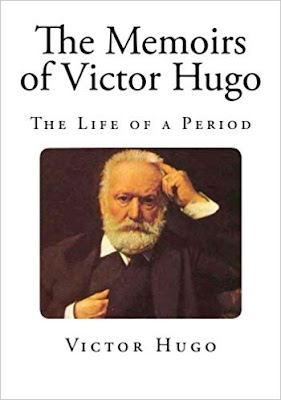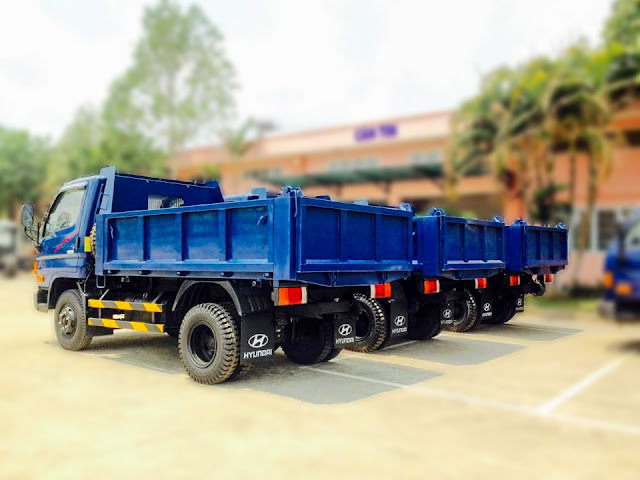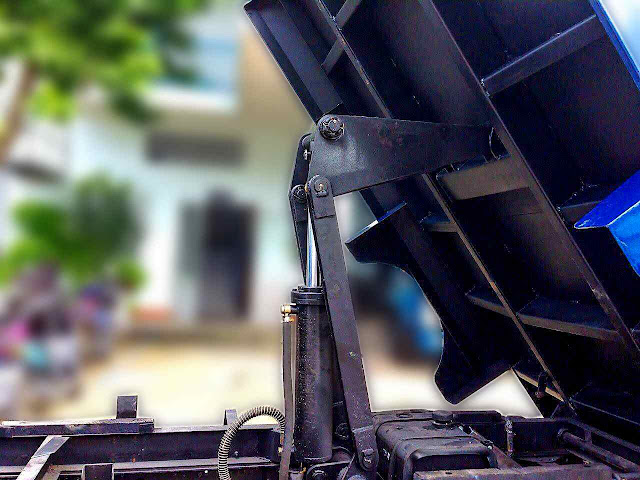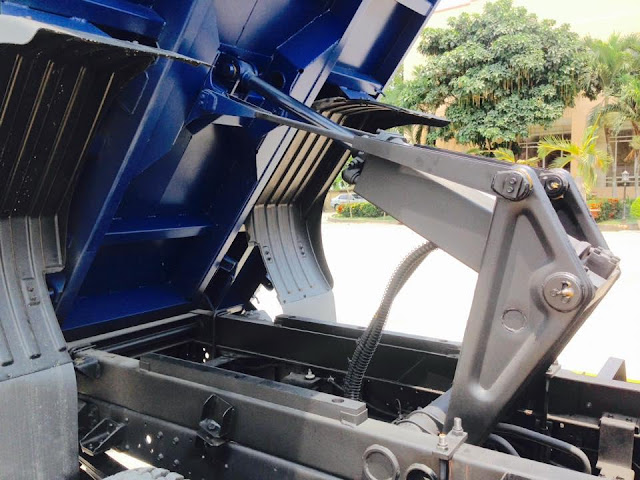CONTENTS.
PREFACE
AT RHEIMS, 1825-1838
RECOUNTED BY EYE-WITNESSES:
I. The Execution of Louis XVI.
II. The Arrival of Napoleon I. in Paris in 1815.
VISIONS OF THE REAL:
I. The Hovel.
II. Pillage.
III. A Dream.
IV. The Panel with the Coat of Arms.
V. The Easter Daisy.
THEATRE:
I. Joanny.
II. Mademoiselle Mars.
III. Frédérick Lemaitre.
IV. The Comiques.
V. Mademoiselle Georges.
VI. Tableaux Vivants.
AT THE ACADEMY
LOVE IN PRISON
AT THE TUILERIES, 1844-1848:
I. The King.
II. The Duchess d'Orleans.
III. The Princes.
IN THE CHAMBER OF PEERS: Gen. Febvier
THE REVOLUTION OF 1848:
I. The Days of February.
II. Expulsions and Evasions.
III. Louis Philippe in Exile.
IV. King Jerome.
V. The Days of June.
VI. Chateaubriand.
VII. Debates on the Days of June.
1849:
I. The Jardin d'Hiver.
II. General Bréa's Murderers.
III. The Suicide of Antonin Moyne.
IV. A Visit to the Old Chamber of Peers.
SKETCHES MADE IN THE NATIONAL ASSEMBLY:
I. Odilon Barrot.
II. Monsieur Thiers.
III. Dufaure.
IV. Changarnier.
V. Lagrange.
VI. Prudhon.
VII. Blanqui.
VIII. Larmartine.
IX. Boulay de la Meurthe.
X. Dupin.
LOUIS BONAPARTE:
I. His Debuts.
II. His Elevation to the Presidency.
III. His First Official Dinner.
IV. The First Month.
V. Feeling His Way.
THE SIEGE OF PARIS
THE ASSEMBLY AT BORDEAUX
PREFACE.
This volume of memoirs has a double character--historical and
intimate. The life of a period, the XIX Century, is bound up in
the life of a man, VICTOR HUGO. As we follow the events set
forth we get the impression they made upon the mind of the
extraordinary man who recounts them; and of all the personages
he brings before us he himself is assuredly not the least
interesting. In portraits from the brushes of Rembrandts there
are always two portraits, that of the model and that of the
painter.
This is not a diary of events arranged in chronological
order, nor is it a continuous autobiography. It is less and
it is more, or rather, it is better than these. It is a sort of
haphazard ~chronique~ in which only striking incidents and
occurrences are brought out, and lengthy and wearisome details
are avoided. VICTOR HUGO'S long and chequered life was filled
with experiences of the most diverse character--literature and
politics, the court and the street, parliament and the theatre,
labour, struggles, disappointments, exile and triumphs. Hence
we get a series of pictures of infinite variety.
Let us pass the gallery rapidly in review.
It opens in 1825, at Rheims, during the coronation of CHARLES X,
with an amusing ~causerie~ on the manners and customs of the
Restoration. The splendour of this coronation ceremony was
singularly spoiled by the pitiable taste of those who had
charge of it. These worthies took upon themselves to mutilate
the sculpture work on the marvellous façade and to "embellish"
the austere cathedral with Gothic decorations of cardboard.
The century, like the author, was young, and in some things
both were incredibly ignorant; the masterpieces of literature
were then unknown to the most learned ~littérateurs~: CHARLES
NODIER had never read the "Romancero", and VICTOR HUGO knew little
or nothing about Shakespeare.
At the outset the poet dominates in VICTOR HUGO; he belongs
wholly to his creative imagination and to his literary work.
It is the theatre; it is his "Cid", and "Hernani", with its stormy
performances; it is the group of his actors, Mlle. MARS, Mlle.
GEORGES, FREDERICK LEMAITRE, the French KEAN, with more genius;
it is the Academy, with its different kind of coteries.
About this time VICTOR HUGO questions, anxiously and not in
vain, a passer-by who witnessed the execution of LOUIS XVI, and
an officer who escorted Napoleon to Paris on his return from the
Island of Elba.
Next, under the title, "Visions of the Real", come some sketches
in the master's best style, of things seen "in the mind's eye,"
as Hamlet says. Among them "The Hovel" will attract attention.
This sketch resembles a page from EDGAR POE, although it was
written long before POE's works were introduced into France.
With "Love in Prison" VICTOR HUGO deals with social questions,
in which he was more interested than in political questions.
And yet, in entering the Chamber of Peers he enters public life.
His sphere is enlarged, he becomes one of the familiars of the
Tuileries. LOUIS PHILIPPE, verbose and full of recollections
that he is fond of imparting to others, seeks the company and
appreciation of this listener of note, and makes all sorts of
confidences to him. The King with his very haughty bonhomie
and his somewhat infatuated wisdom; the grave and sweet DUCHESS
D'ORLEANS, the boisterous and amiable princes--the whole
commonplace and home-like court--are depicted with kindliness
but sincerity.
The horizon, however, grows dark, and from 1846 the new peer of
France notes the gradual tottering of the edifice of royalty.
The revolution of 1848 bursts out. Nothing could be more
thrilling than the account, hour by hour, of the events of the
three days of February. VICTOR HUGO is not merely a spectator
of this great drama, he is an actor in it. He is in the
streets, he makes speeches to the people, he seeks to restrain
them; he believes, with too good reason, that the Republic is
premature, and, in the Place de la Bastille, before the
evolutionary Faubourg Saint Antoine, he dares to proclaim the
Regency.
Four months later distress provokes the formidable insurrection
of June, which is fatal to the Republic.
The year 1848 is the stormy year. The atmosphere is fiery, men
are violent, events are tragical. Battles in the streets are
followed by fierce debates in the Assembly. VICTOR HUGO takes
part in the mêlée. We witness the scenes with him; he points
out the chief actors to us. His "Sketches" made in the National
Assembly are "sketched from life" in the fullest acceptation of
the term. Twenty lines suffice. ODILON BARROT and CHANGARNIER,
PRUDHON and BLANQUI, LAMARTINE and "Monsieur THIERS" come, go,
speak--veritable living figures.
The most curious of the figures is LOUIS BONAPARTE when he
arrived in Paris and when he assumed the Presidency of the
Republic. He is gauche, affected, somewhat ridiculous,
distrusted by the Republicans, and scoffed at by the Royalists.
Nothing could be more suggestive or more piquant than the
inauguration dinner at the Elysee, at which VICTOR HUGO was one
of the guests, and the first and courteous relations between the
author of "Napoleon the Little" and the future Emperor who was
to inflict twenty years of exile upon him.
But now we come to the year which VICTOR HUGO has designated
"The Terrible Year," the war, and the siege of Paris. This part
of the volume is made up of extracts from note-books, private
and personal notes, dotted down from day to day. Which is to
say that they do not constitute an account of the oft-related
episodes of the siege, but tell something new, the little side
of great events, the little incidents of everyday life, the
number of shells fired into the city and what they cost, the
degrees of cold, the price of provisions, what is being said,
sung, and eaten, and at the same time give the psychology of the
great city, its illusions, revolts, wrath, anguish, and also its
gaiety; for during these long months Paris never gave up hope
and preserved an heroic cheerfulness.
On the other hand a painful note runs through the diary kept
during the meeting of the Assembly at Bordeaux. France is not
only vanquished, she is mutilated. The conqueror demands a
ransom of milliards--it is his right, the right of the
strongest; but he tears from her two provinces, with their
inhabitants devoted to France; it is a return towards barbarism.
VICTOR HUGO withdraws indignantly from the Assembly which has
agreed to endorse the Treaty of Frankfort. And three days after
his resignation he sees CHARLES HUGO, his eldest son, die a
victim to the privations of the siege. He is stricken at once
in his love of country and in his paternal love, and one can say
that in these painful pages, more than in any of the others, the
book is history that has been lived.
PAUL MAURICE.
Paris, Sept. 15, 1899.
AT RHEIMS.
1823-1838.
AT RHEIMS.
1823-1838.
It was at Rheims that I heard the name of Shakespeare for the
first time. It was pronounced by Charles Nodier. That was in
1825, during the coronation of Charles X.
No one at that time spoke of Shakespeare quite seriously.
Voltaire's ridicule of him was law. Mme. de Staël had adopted
Germany, the great land of Kant, of Schiller, and of Beethoven.
Ducis was at the height of his triumph; he and Delille were
seated side by side in academic glory, which is not unlike
theatrical glory. Ducis had succeeded in doing something with
Shakespeare; he had made him possible; he had extracted some
"tragedies" from him; Ducis impressed one as being a man who
could chisel an Apollo out of Moloch. It was the time when Iago
was called Pezare; Horatio, Norceste; and Desdemona, Hedelmone.
A charming and very witty woman, the Duchess de Duras, used to
say: "Desdemona, what an ugly name! Fie!" Talma, Prince of
Denmark, in a tunic of lilac satin trimmed with fur, used to
exclaim: "Avaunt! Dread spectre!" The poor spectre, in fact,
was only tolerated behind the scenes. If it had ventured to put
in the slightest appearance M. Evariste Dumoulin would have
given it a severe talking to. Some Génin or other would have
hurled at it the first cobble-stone he could lay his hand on--a
line from Boileau: ~L'esprit n'est point ému de ce qu'il ne croit
pas~. It was replaced on the stage by an "urn" that Talma
carried under his arm. A spectre is ridiculous; "ashes," that's
the style! Are not the "ashes" of Napoleon still spoken of? Is
not the translation of the coffin from St. Helena to the
Invalides alluded to as "the return of the ashes"? As to the
witches of Macbeth, they were rigorously barred. The
hall-porter of the Théâtre-Français had his orders. They would
have been received with their own brooms.
I am mistaken, however, in saying that I did not know
Shakespeare. I knew him as everybody else did, not having read
him, and having treated him with ridicule. My childhood began,
as everybody's childhood begins, with prejudices. Man finds
prejudices beside his cradle, puts them from him a little in the
course of his career, and often, alas! takes to them again in
his old age.
During this journey in 1825 Charles Nodier and I passed our time
recounting to each other the Gothic tales and romances that have
taken root in Rheims. Our memories and sometimes our
imaginations, clubbed together. Each of us furnished his
legend. Rheims is one of the most impossible towns in the
geography of story. Pagan lords have lived there, one of whom
gave as a dower to his daughter the strips of land in
Borysthenes called the "race-courses of Achilles." The Duke de
Guyenne, in the fabliaux, passes through Rheims on his way to
besiege Babylon; Babylon, moreover, which is very worthy of
Rheims, is the capital of the Admiral Gaudissius. It is at
Rheims that the deputation sent by the Locri Ozolae to
Apollonius of Tyana, "high priest of Bellona," "disembarks."
While discussing this disembarkation we argued concerning the
Locri Ozolae. These people, according to Nodier, were called
the Fetidae because they were half monkeys; according to myself,
because they inhabited the marshes of Phocis. We reconstructed
on the spot the tradition of St. Remigius and his adventures
with the fairy Mazelane. The Champagne country is rich in
tales. Nearly all the old Gaulish fables had their origin in
this province. Rheims is the land of chimeras. It is perhaps
for this reason that kings were crowned there.
Legends are so natural to this place, are in such good soil,
that they immediately began to germinate upon the coronation of
Charles X. itself. The Duke of Northumberland, the
representative of England at the coronation ceremonies, was
reputed fabulously wealthy. Wealthy and English, how could he
be otherwise than ~a la mode~? The English, at that period, were
very popular in French society, although not among the people.
They were liked in certain salons because of Waterloo, which was
still fairly recent, and to Anglicize the French language was a
recommendation in ultra-fashionable society. Lord
Northumberland, therefore, long before his arrival, was popular
and legendary in Rheims. A coronation was a godsend to Rheims.
A flood of opulent people inundated the city. It was the Nile
that was passing. Landlords rubbed their hands with glee.
There was in Rheims in those days, and there probably
is to-day, at the corner of a street giving on to the square,
a rather large house with a carriage-entrance and a balcony,
built of stone in the royal style of Louis XIV., and facing the
cathedral. About this house and Lord Northumberland the
following was related:
In January, 1825, the balcony of the house bore the notice:
"House for Sale." All at once the "Moniteur" announced that the
coronation of Charles X. would take place at Rheims in the
spring. There was great rejoicing in the city. Notices of
rooms to let were immediately hung out everywhere. The meanest
room was to bring in at least sixty francs a day. One morning a
man of irreproachable appearance, dressed in black, with a white
cravat, an Englishman who spoke broken French, presented himself
at the house in the square. He saw the proprietor, who eyed him
attentively.
"You wish to sell your house?" queried the Englishman.
"How much?"
"Ten thousand francs."
"But I don't want to buy it."
"What do you want, then?"
"Only to hire it."
"That's different. For a year?"
"For six months?"
"No. I want to hire it for three days."
"How much will you charge?"
"Thirty thousand francs."
The gentleman was Lord Northumberland's steward, who was looking
for a lodging for his master for the coronation ceremonies. The
proprietor had smelled the Englishman and guessed the steward.
The house was satisfactory, and the proprietor held out for his
price; the Englishman, being only a Norman, gave way to the
Champenois; the duke paid the 30,000 francs, and spent three
days in the house, at the rate of 400 francs an hour.
Nodier and I were two explorers. When we travelled together, as
we occasionally did, we went on voyages of discovery, he in
search of rare books, I in search of ruins. He would go into
ecstasies over a _Cymbalum Mound_ with margins, and I over a
defaced portal. We had given each other a devil. He said to
me: "You are possessed of the demon Ogive." "And you," I
answered, "of the demon Elzevir."
At Soissons, while I was exploring Saint Jean-des-Vignes, he had
discovered, in a suburb, a ragpicker. The ragpicker's basket is
the hyphen between rags and paper, and the ragpicker is the
hyphen between the beggar and the philosopher. Nodier who gave
to the poor, and sometimes to philosophers, had entered the
ragpicker's abode. The ragpicker turned out to be a book
dealer. Among the books Nodier noticed a rather thick volume
of six or eight hundred pages, printed in Spanish, two columns
to a page, badly damaged by worms, and the binding missing from
the back. The ragpicker, asked what he wanted for it, replied,
trembling lest the price should be refused: "Five francs," which
Nodier paid, also trembling, but with joy. This book was the
_Romancero_ complete. There are only three complete copies of
this edition now in existence. One of these a few years ago
sold for 7,500 francs. Moreover, worms are vying with each
other in eating up these three remaining copies. The peoples,
feeders of princes, have something else to do than spend their
money to preserve for new editions the legacies of human
intellect, and the _Romancero_, being merely an Iliad, has not
been reprinted.
During the three days of the coronation there were great
crowds in the streets of Rheims, at the Archbishop's palace,
and on the promenades along the Vesdre, eager to catch a glimpse
of Charles X. I said to Charles Nodier: "Let us go and see his
majesty the cathedral."
Rheims is a proverb in Gothic Christian art. One speaks of the
"nave of Amiens, the bell towers of Chartres, the façade of
Rheims." A month before the coronation of Charles X a swarm of
masons, perched on ladders and clinging to knotted ropes, spent
a week smashing with hammers every bit of jutting sculpture on
the façade, for fear a stone might become detached from one of
these reliefs and fall on the King's head. The debris littered
the pavement and was swept away. For a long time I had in my
possession a head of Christ that fell in this way. It was
stolen from me in 1851. This head was unfortunate; broken by a
king, it was lost by an exile.
Nodier was an admirable antiquary, and we explored the cathedral
from top to bottom, encumbered though it was with scaffolding,
painted scenery, and stage side lights. The nave being only of
stone, they had hidden it by an edifice of cardboard, doubtless
because the latter bore a greater resemblance to the monarchy of
that period. For the coronation of the King of France they had
transformed a church into a theatres and it has since been
related, with perfect accuracy, that on arriving at the entrance
I asked of the bodyguard on duty: "Where is my box?"
This cathedral of Rheims is beautiful above all cathedrals. On
the façade are kings; on the absis, people being put to the
torture by executioners. Coronation of kings with an
accompaniment of victims. The façade is one of the most
magnificent symphonies ever sung by that music, architecture.
One dreams for a long time before this oratorio. Looking up
from the square you see at a giddy height, at the base of the
two towers, a row of gigantic statues representing kings of
France. In their hands they hold the sceptre, the sword, the
hand of justice, and the globe, and on their heads are antique
open crowns with bulging gems. It is superb and grim. You push
open the bell-ringer's door, climb the winding staircase, "the
screw of St. Giles," to the towers, to the high regions of
prayer; you look down and the statues are below you. The row of
kings is plunging into the abysm. You hear the whispering of
the enormous bells, which vibrate at the kiss of vague zephyrs
from the sky.
One day I gazed down from the top of the tower through
an embrasure. The entire façade sheered straight below
me. I perceived in the depth, on top of a long stone
support that extended down the wall directly beneath me
to the escarpment, so that its form was lost, a sort of
round basin. Rain-water had collected there and formed
a narrow mirror at the bottom; there were also a tuft
of grass with flowers in it, and a swallow's nest. Thus
in a space only two feet in diameter were a lake, a
garden and a habitation--a birds' paradise. As I gazed
the swallow was giving water to her brood. Round the
upper edge of the basin were what looked like crenelles,
and between these the swallow had built her nest. I
examined these crenelles. They had the form of
fleurs-de-lys. The support was a statue. This happy little
world was the stone crown of an old king. And if God were asked:
"Of what use was this Lothario, this Philip, this Charles,
this Louis, this emperor, this king?" God peradventure
would reply: "He had this statue made and lodged a swallow."
The coronation occurred. This is not the place to describe
it. Besides my recollections of the ceremony of May
27, 1825, have been recounted elsewhere by another, more
ably than I could set them forth.
Suffice it to say that it was a radiant day. God seemed
to have given his assent to the fête. The long clear
windows--for there are no more stained-glass windows at
Rheims--let in bright daylight; all the light of May was
in the church. The Archbishop was covered with gilding
and the altar with rays. Marshal de Lauriston, Minister of
the King's Household, rejoiced at the sunshine. He came
and went, as busy as could be, and conversed in low tones
with Lecointe and Hittorf, the architects. The fine morning
afforded the occasion to say, "the sun of the coronation,"
as one used to say "the sun of Austerlitz." And in the
resplendent light a profusion of lamps and tapers found
means to beam.
At one moment Charles X., attired in a cherry-coloured
simar striped with gold, lay at full length at the
Archbishop's feet. The peers of France on the right,
embroidered with gold, beplumed in the Henri IV. style, and
wearing long mantles of velvet and ermine, and the Deputies
on the left, in dress-coats of blue cloth with silver
fleurs-de-lys on the collars, looked on.
About all the forms of chance were represented there:
the Papal benediction by the cardinals, some of whom had
witnessed the coronation of Napoleon; victory by the marshals;
heredity by the Duke d'Angoulême, dauphin; happiness
by M. de Talleyrand, lame but able to get about;
the rising and falling of stocks by M. de Villèle; joy by
the birds that were released and flew away, and the knaves
in a pack of playing-cards by the four heralds.
A vast carpet embroidered with fleurs-de-lys, made expressly
for the occasion, and called the "coronation carpet,"
covered the old flagstones from one end of the cathedral
to the other and concealed the tombstones in the pavement.
Thick, luminous smoke of incense filled the nave.
The birds that had been set at liberty flew wildly about in
this cloud.
The King changed his costume six or seven times. The
first prince of the blood, Louis Philippe, Duke d'Orleans,
aided him. The Duke de Bordeaux, who was five years
old, was in a gallery.
The pew in which Nodier and I were seated adjoined those
of the Deputies. In the middle of the
ceremony, just before the King prostrated himself at the
feet of the Archbishop, a Deputy for the Doubs department,
named M. Hémonin, turned towards Nodier, who was close to
him, and with his finger on his lips, as a sign that he
did not wish to disturb the Archbishop's orisons by
speaking, slipped something into my friend's hand. This
something was a book. Nodier took it and glanced over it.
"What is it?" I whispered.
"Nothing very precious," he replied. "An odd volume
of Shakespeare, Glasgow edition."
One of the tapestries from the treasure of the church
hanging exactly opposite to us represented a not very
historical interview between John Lackland and Philip
Augustus. Nodier turned over the leaves of the book for a
few minutes, then pointed to the tapestry.
"You see that tapestry?"
"Yes."
"Do you know what it represents?"
"No."
"John Lackland."
"Well, what of it?"
"John Lackland is also in this book."
The volume, which was in sheep binding and worn at
the corners, was indeed a copy of _King John_.
M. Hémonin turned to Nodier and said: "I paid six
sous for it."
In the evening the Duke of Northumberland gave a
ball. It was a magnificent, fairylike spectacle. This
Arabian Nights ambassador brought one of these nights
to Rheims. Every woman found a diamond in her bouquet.
I could not dance. Nodier had not danced since he was
sixteen years of age, when a great aunt went into ecstasies
over his terpsichorean efforts and congratulated him in the
following terms: "~Tu est charmant, tu danses comme rim
chou~!" We did not go to Lord Northumberland's ball.
"What shall we do tonight?" said I to Nodier.
He held up his odd volume and answered:
"Let us read this."
We read.
That is to say, Nodier read. He knew English (without
being able to speak it, I believe) enough to make it out.
He read aloud, and translated as he read. At intervals,
while he rested, I took the book bought from the ragpicker
of Soissons, and read passages from the _Romancero_. Like
Nodier, I translated as I read. We compared the English
with the Castilian book; we confronted the dramatic with
the epic. Nodier stood up for Shakespeare, whom he could
read in English, and I for the _Romancero_, which I could
read in Spanish. We brought face to face, he the bastard
Faulconbridge, I the bastard Mudarra. And little by little
in contradicting we convinced each other, and Nodier became
filled with enthusiasm for the _Romancero_, and I with
admiration for Shakespeare.
Listeners arrived. One passes the evening as best one
can in a provincial town on a coronation day when one
doesn't go to the ball. We formed quite a little club. There
was an academician, M. Roger; a man of letters, M. d'Eckstein;
M. de Marcellus, friend and country neighbour of
my father, who poked fun at his royalism and mine; good
old Marquis d'Herbouville, and M. Hémonin, donor of the
book that cost six sous.
"It isn't worth the money!" exclaimed M. Roger.
The conversation developed into a debate. Judgment
was passed upon _King John_. M. de Marcellus declared
that the assassination of Arthur was an improbable incident.
It was pointed out to him that it was a matter of history.
It was with difficulty that he became reconciled to it. For
kings to kill each other was impossible. To M. de
Marcellus's mind the murdering of kings began on January 21.
Regicide was synonymous with '93. To kill a king was
an unheard-of thing that the "populace" alone were capable
of doing. No king except Louis XVI. had ever been
violently put to death. He, however, reluctantly admitted
the case of Charles I. In his death also he saw the
hand of the populace. All the rest was demagogic lying
and calumny.
Read More
PREFACE
AT RHEIMS, 1825-1838
RECOUNTED BY EYE-WITNESSES:
I. The Execution of Louis XVI.
II. The Arrival of Napoleon I. in Paris in 1815.
VISIONS OF THE REAL:
I. The Hovel.
II. Pillage.
III. A Dream.
IV. The Panel with the Coat of Arms.
V. The Easter Daisy.
THEATRE:
I. Joanny.
II. Mademoiselle Mars.
III. Frédérick Lemaitre.
IV. The Comiques.
V. Mademoiselle Georges.
VI. Tableaux Vivants.
AT THE ACADEMY
LOVE IN PRISON
AT THE TUILERIES, 1844-1848:
I. The King.
II. The Duchess d'Orleans.
III. The Princes.
IN THE CHAMBER OF PEERS: Gen. Febvier
THE REVOLUTION OF 1848:
I. The Days of February.
II. Expulsions and Evasions.
III. Louis Philippe in Exile.
IV. King Jerome.
V. The Days of June.
VI. Chateaubriand.
VII. Debates on the Days of June.
1849:
I. The Jardin d'Hiver.
II. General Bréa's Murderers.
III. The Suicide of Antonin Moyne.
IV. A Visit to the Old Chamber of Peers.
SKETCHES MADE IN THE NATIONAL ASSEMBLY:
I. Odilon Barrot.
II. Monsieur Thiers.
III. Dufaure.
IV. Changarnier.
V. Lagrange.
VI. Prudhon.
VII. Blanqui.
VIII. Larmartine.
IX. Boulay de la Meurthe.
X. Dupin.
LOUIS BONAPARTE:
I. His Debuts.
II. His Elevation to the Presidency.
III. His First Official Dinner.
IV. The First Month.
V. Feeling His Way.
THE SIEGE OF PARIS
THE ASSEMBLY AT BORDEAUX
PREFACE.
This volume of memoirs has a double character--historical and
intimate. The life of a period, the XIX Century, is bound up in
the life of a man, VICTOR HUGO. As we follow the events set
forth we get the impression they made upon the mind of the
extraordinary man who recounts them; and of all the personages
he brings before us he himself is assuredly not the least
interesting. In portraits from the brushes of Rembrandts there
are always two portraits, that of the model and that of the
painter.
This is not a diary of events arranged in chronological
order, nor is it a continuous autobiography. It is less and
it is more, or rather, it is better than these. It is a sort of
haphazard ~chronique~ in which only striking incidents and
occurrences are brought out, and lengthy and wearisome details
are avoided. VICTOR HUGO'S long and chequered life was filled
with experiences of the most diverse character--literature and
politics, the court and the street, parliament and the theatre,
labour, struggles, disappointments, exile and triumphs. Hence
we get a series of pictures of infinite variety.
Let us pass the gallery rapidly in review.
It opens in 1825, at Rheims, during the coronation of CHARLES X,
with an amusing ~causerie~ on the manners and customs of the
Restoration. The splendour of this coronation ceremony was
singularly spoiled by the pitiable taste of those who had
charge of it. These worthies took upon themselves to mutilate
the sculpture work on the marvellous façade and to "embellish"
the austere cathedral with Gothic decorations of cardboard.
The century, like the author, was young, and in some things
both were incredibly ignorant; the masterpieces of literature
were then unknown to the most learned ~littérateurs~: CHARLES
NODIER had never read the "Romancero", and VICTOR HUGO knew little
or nothing about Shakespeare.
At the outset the poet dominates in VICTOR HUGO; he belongs
wholly to his creative imagination and to his literary work.
It is the theatre; it is his "Cid", and "Hernani", with its stormy
performances; it is the group of his actors, Mlle. MARS, Mlle.
GEORGES, FREDERICK LEMAITRE, the French KEAN, with more genius;
it is the Academy, with its different kind of coteries.
About this time VICTOR HUGO questions, anxiously and not in
vain, a passer-by who witnessed the execution of LOUIS XVI, and
an officer who escorted Napoleon to Paris on his return from the
Island of Elba.
Next, under the title, "Visions of the Real", come some sketches
in the master's best style, of things seen "in the mind's eye,"
as Hamlet says. Among them "The Hovel" will attract attention.
This sketch resembles a page from EDGAR POE, although it was
written long before POE's works were introduced into France.
With "Love in Prison" VICTOR HUGO deals with social questions,
in which he was more interested than in political questions.
And yet, in entering the Chamber of Peers he enters public life.
His sphere is enlarged, he becomes one of the familiars of the
Tuileries. LOUIS PHILIPPE, verbose and full of recollections
that he is fond of imparting to others, seeks the company and
appreciation of this listener of note, and makes all sorts of
confidences to him. The King with his very haughty bonhomie
and his somewhat infatuated wisdom; the grave and sweet DUCHESS
D'ORLEANS, the boisterous and amiable princes--the whole
commonplace and home-like court--are depicted with kindliness
but sincerity.
The horizon, however, grows dark, and from 1846 the new peer of
France notes the gradual tottering of the edifice of royalty.
The revolution of 1848 bursts out. Nothing could be more
thrilling than the account, hour by hour, of the events of the
three days of February. VICTOR HUGO is not merely a spectator
of this great drama, he is an actor in it. He is in the
streets, he makes speeches to the people, he seeks to restrain
them; he believes, with too good reason, that the Republic is
premature, and, in the Place de la Bastille, before the
evolutionary Faubourg Saint Antoine, he dares to proclaim the
Regency.
Four months later distress provokes the formidable insurrection
of June, which is fatal to the Republic.
The year 1848 is the stormy year. The atmosphere is fiery, men
are violent, events are tragical. Battles in the streets are
followed by fierce debates in the Assembly. VICTOR HUGO takes
part in the mêlée. We witness the scenes with him; he points
out the chief actors to us. His "Sketches" made in the National
Assembly are "sketched from life" in the fullest acceptation of
the term. Twenty lines suffice. ODILON BARROT and CHANGARNIER,
PRUDHON and BLANQUI, LAMARTINE and "Monsieur THIERS" come, go,
speak--veritable living figures.
The most curious of the figures is LOUIS BONAPARTE when he
arrived in Paris and when he assumed the Presidency of the
Republic. He is gauche, affected, somewhat ridiculous,
distrusted by the Republicans, and scoffed at by the Royalists.
Nothing could be more suggestive or more piquant than the
inauguration dinner at the Elysee, at which VICTOR HUGO was one
of the guests, and the first and courteous relations between the
author of "Napoleon the Little" and the future Emperor who was
to inflict twenty years of exile upon him.
But now we come to the year which VICTOR HUGO has designated
"The Terrible Year," the war, and the siege of Paris. This part
of the volume is made up of extracts from note-books, private
and personal notes, dotted down from day to day. Which is to
say that they do not constitute an account of the oft-related
episodes of the siege, but tell something new, the little side
of great events, the little incidents of everyday life, the
number of shells fired into the city and what they cost, the
degrees of cold, the price of provisions, what is being said,
sung, and eaten, and at the same time give the psychology of the
great city, its illusions, revolts, wrath, anguish, and also its
gaiety; for during these long months Paris never gave up hope
and preserved an heroic cheerfulness.
On the other hand a painful note runs through the diary kept
during the meeting of the Assembly at Bordeaux. France is not
only vanquished, she is mutilated. The conqueror demands a
ransom of milliards--it is his right, the right of the
strongest; but he tears from her two provinces, with their
inhabitants devoted to France; it is a return towards barbarism.
VICTOR HUGO withdraws indignantly from the Assembly which has
agreed to endorse the Treaty of Frankfort. And three days after
his resignation he sees CHARLES HUGO, his eldest son, die a
victim to the privations of the siege. He is stricken at once
in his love of country and in his paternal love, and one can say
that in these painful pages, more than in any of the others, the
book is history that has been lived.
PAUL MAURICE.
Paris, Sept. 15, 1899.
AT RHEIMS.
1823-1838.
AT RHEIMS.
1823-1838.
It was at Rheims that I heard the name of Shakespeare for the
first time. It was pronounced by Charles Nodier. That was in
1825, during the coronation of Charles X.
No one at that time spoke of Shakespeare quite seriously.
Voltaire's ridicule of him was law. Mme. de Staël had adopted
Germany, the great land of Kant, of Schiller, and of Beethoven.
Ducis was at the height of his triumph; he and Delille were
seated side by side in academic glory, which is not unlike
theatrical glory. Ducis had succeeded in doing something with
Shakespeare; he had made him possible; he had extracted some
"tragedies" from him; Ducis impressed one as being a man who
could chisel an Apollo out of Moloch. It was the time when Iago
was called Pezare; Horatio, Norceste; and Desdemona, Hedelmone.
A charming and very witty woman, the Duchess de Duras, used to
say: "Desdemona, what an ugly name! Fie!" Talma, Prince of
Denmark, in a tunic of lilac satin trimmed with fur, used to
exclaim: "Avaunt! Dread spectre!" The poor spectre, in fact,
was only tolerated behind the scenes. If it had ventured to put
in the slightest appearance M. Evariste Dumoulin would have
given it a severe talking to. Some Génin or other would have
hurled at it the first cobble-stone he could lay his hand on--a
line from Boileau: ~L'esprit n'est point ému de ce qu'il ne croit
pas~. It was replaced on the stage by an "urn" that Talma
carried under his arm. A spectre is ridiculous; "ashes," that's
the style! Are not the "ashes" of Napoleon still spoken of? Is
not the translation of the coffin from St. Helena to the
Invalides alluded to as "the return of the ashes"? As to the
witches of Macbeth, they were rigorously barred. The
hall-porter of the Théâtre-Français had his orders. They would
have been received with their own brooms.
I am mistaken, however, in saying that I did not know
Shakespeare. I knew him as everybody else did, not having read
him, and having treated him with ridicule. My childhood began,
as everybody's childhood begins, with prejudices. Man finds
prejudices beside his cradle, puts them from him a little in the
course of his career, and often, alas! takes to them again in
his old age.
During this journey in 1825 Charles Nodier and I passed our time
recounting to each other the Gothic tales and romances that have
taken root in Rheims. Our memories and sometimes our
imaginations, clubbed together. Each of us furnished his
legend. Rheims is one of the most impossible towns in the
geography of story. Pagan lords have lived there, one of whom
gave as a dower to his daughter the strips of land in
Borysthenes called the "race-courses of Achilles." The Duke de
Guyenne, in the fabliaux, passes through Rheims on his way to
besiege Babylon; Babylon, moreover, which is very worthy of
Rheims, is the capital of the Admiral Gaudissius. It is at
Rheims that the deputation sent by the Locri Ozolae to
Apollonius of Tyana, "high priest of Bellona," "disembarks."
While discussing this disembarkation we argued concerning the
Locri Ozolae. These people, according to Nodier, were called
the Fetidae because they were half monkeys; according to myself,
because they inhabited the marshes of Phocis. We reconstructed
on the spot the tradition of St. Remigius and his adventures
with the fairy Mazelane. The Champagne country is rich in
tales. Nearly all the old Gaulish fables had their origin in
this province. Rheims is the land of chimeras. It is perhaps
for this reason that kings were crowned there.
Legends are so natural to this place, are in such good soil,
that they immediately began to germinate upon the coronation of
Charles X. itself. The Duke of Northumberland, the
representative of England at the coronation ceremonies, was
reputed fabulously wealthy. Wealthy and English, how could he
be otherwise than ~a la mode~? The English, at that period, were
very popular in French society, although not among the people.
They were liked in certain salons because of Waterloo, which was
still fairly recent, and to Anglicize the French language was a
recommendation in ultra-fashionable society. Lord
Northumberland, therefore, long before his arrival, was popular
and legendary in Rheims. A coronation was a godsend to Rheims.
A flood of opulent people inundated the city. It was the Nile
that was passing. Landlords rubbed their hands with glee.
There was in Rheims in those days, and there probably
is to-day, at the corner of a street giving on to the square,
a rather large house with a carriage-entrance and a balcony,
built of stone in the royal style of Louis XIV., and facing the
cathedral. About this house and Lord Northumberland the
following was related:
In January, 1825, the balcony of the house bore the notice:
"House for Sale." All at once the "Moniteur" announced that the
coronation of Charles X. would take place at Rheims in the
spring. There was great rejoicing in the city. Notices of
rooms to let were immediately hung out everywhere. The meanest
room was to bring in at least sixty francs a day. One morning a
man of irreproachable appearance, dressed in black, with a white
cravat, an Englishman who spoke broken French, presented himself
at the house in the square. He saw the proprietor, who eyed him
attentively.
"You wish to sell your house?" queried the Englishman.
"How much?"
"Ten thousand francs."
"But I don't want to buy it."
"What do you want, then?"
"Only to hire it."
"That's different. For a year?"
"For six months?"
"No. I want to hire it for three days."
"How much will you charge?"
"Thirty thousand francs."
The gentleman was Lord Northumberland's steward, who was looking
for a lodging for his master for the coronation ceremonies. The
proprietor had smelled the Englishman and guessed the steward.
The house was satisfactory, and the proprietor held out for his
price; the Englishman, being only a Norman, gave way to the
Champenois; the duke paid the 30,000 francs, and spent three
days in the house, at the rate of 400 francs an hour.
Nodier and I were two explorers. When we travelled together, as
we occasionally did, we went on voyages of discovery, he in
search of rare books, I in search of ruins. He would go into
ecstasies over a _Cymbalum Mound_ with margins, and I over a
defaced portal. We had given each other a devil. He said to
me: "You are possessed of the demon Ogive." "And you," I
answered, "of the demon Elzevir."
At Soissons, while I was exploring Saint Jean-des-Vignes, he had
discovered, in a suburb, a ragpicker. The ragpicker's basket is
the hyphen between rags and paper, and the ragpicker is the
hyphen between the beggar and the philosopher. Nodier who gave
to the poor, and sometimes to philosophers, had entered the
ragpicker's abode. The ragpicker turned out to be a book
dealer. Among the books Nodier noticed a rather thick volume
of six or eight hundred pages, printed in Spanish, two columns
to a page, badly damaged by worms, and the binding missing from
the back. The ragpicker, asked what he wanted for it, replied,
trembling lest the price should be refused: "Five francs," which
Nodier paid, also trembling, but with joy. This book was the
_Romancero_ complete. There are only three complete copies of
this edition now in existence. One of these a few years ago
sold for 7,500 francs. Moreover, worms are vying with each
other in eating up these three remaining copies. The peoples,
feeders of princes, have something else to do than spend their
money to preserve for new editions the legacies of human
intellect, and the _Romancero_, being merely an Iliad, has not
been reprinted.
During the three days of the coronation there were great
crowds in the streets of Rheims, at the Archbishop's palace,
and on the promenades along the Vesdre, eager to catch a glimpse
of Charles X. I said to Charles Nodier: "Let us go and see his
majesty the cathedral."
Rheims is a proverb in Gothic Christian art. One speaks of the
"nave of Amiens, the bell towers of Chartres, the façade of
Rheims." A month before the coronation of Charles X a swarm of
masons, perched on ladders and clinging to knotted ropes, spent
a week smashing with hammers every bit of jutting sculpture on
the façade, for fear a stone might become detached from one of
these reliefs and fall on the King's head. The debris littered
the pavement and was swept away. For a long time I had in my
possession a head of Christ that fell in this way. It was
stolen from me in 1851. This head was unfortunate; broken by a
king, it was lost by an exile.
Nodier was an admirable antiquary, and we explored the cathedral
from top to bottom, encumbered though it was with scaffolding,
painted scenery, and stage side lights. The nave being only of
stone, they had hidden it by an edifice of cardboard, doubtless
because the latter bore a greater resemblance to the monarchy of
that period. For the coronation of the King of France they had
transformed a church into a theatres and it has since been
related, with perfect accuracy, that on arriving at the entrance
I asked of the bodyguard on duty: "Where is my box?"
This cathedral of Rheims is beautiful above all cathedrals. On
the façade are kings; on the absis, people being put to the
torture by executioners. Coronation of kings with an
accompaniment of victims. The façade is one of the most
magnificent symphonies ever sung by that music, architecture.
One dreams for a long time before this oratorio. Looking up
from the square you see at a giddy height, at the base of the
two towers, a row of gigantic statues representing kings of
France. In their hands they hold the sceptre, the sword, the
hand of justice, and the globe, and on their heads are antique
open crowns with bulging gems. It is superb and grim. You push
open the bell-ringer's door, climb the winding staircase, "the
screw of St. Giles," to the towers, to the high regions of
prayer; you look down and the statues are below you. The row of
kings is plunging into the abysm. You hear the whispering of
the enormous bells, which vibrate at the kiss of vague zephyrs
from the sky.
One day I gazed down from the top of the tower through
an embrasure. The entire façade sheered straight below
me. I perceived in the depth, on top of a long stone
support that extended down the wall directly beneath me
to the escarpment, so that its form was lost, a sort of
round basin. Rain-water had collected there and formed
a narrow mirror at the bottom; there were also a tuft
of grass with flowers in it, and a swallow's nest. Thus
in a space only two feet in diameter were a lake, a
garden and a habitation--a birds' paradise. As I gazed
the swallow was giving water to her brood. Round the
upper edge of the basin were what looked like crenelles,
and between these the swallow had built her nest. I
examined these crenelles. They had the form of
fleurs-de-lys. The support was a statue. This happy little
world was the stone crown of an old king. And if God were asked:
"Of what use was this Lothario, this Philip, this Charles,
this Louis, this emperor, this king?" God peradventure
would reply: "He had this statue made and lodged a swallow."
The coronation occurred. This is not the place to describe
it. Besides my recollections of the ceremony of May
27, 1825, have been recounted elsewhere by another, more
ably than I could set them forth.
Suffice it to say that it was a radiant day. God seemed
to have given his assent to the fête. The long clear
windows--for there are no more stained-glass windows at
Rheims--let in bright daylight; all the light of May was
in the church. The Archbishop was covered with gilding
and the altar with rays. Marshal de Lauriston, Minister of
the King's Household, rejoiced at the sunshine. He came
and went, as busy as could be, and conversed in low tones
with Lecointe and Hittorf, the architects. The fine morning
afforded the occasion to say, "the sun of the coronation,"
as one used to say "the sun of Austerlitz." And in the
resplendent light a profusion of lamps and tapers found
means to beam.
At one moment Charles X., attired in a cherry-coloured
simar striped with gold, lay at full length at the
Archbishop's feet. The peers of France on the right,
embroidered with gold, beplumed in the Henri IV. style, and
wearing long mantles of velvet and ermine, and the Deputies
on the left, in dress-coats of blue cloth with silver
fleurs-de-lys on the collars, looked on.
About all the forms of chance were represented there:
the Papal benediction by the cardinals, some of whom had
witnessed the coronation of Napoleon; victory by the marshals;
heredity by the Duke d'Angoulême, dauphin; happiness
by M. de Talleyrand, lame but able to get about;
the rising and falling of stocks by M. de Villèle; joy by
the birds that were released and flew away, and the knaves
in a pack of playing-cards by the four heralds.
A vast carpet embroidered with fleurs-de-lys, made expressly
for the occasion, and called the "coronation carpet,"
covered the old flagstones from one end of the cathedral
to the other and concealed the tombstones in the pavement.
Thick, luminous smoke of incense filled the nave.
The birds that had been set at liberty flew wildly about in
this cloud.
The King changed his costume six or seven times. The
first prince of the blood, Louis Philippe, Duke d'Orleans,
aided him. The Duke de Bordeaux, who was five years
old, was in a gallery.
The pew in which Nodier and I were seated adjoined those
of the Deputies. In the middle of the
ceremony, just before the King prostrated himself at the
feet of the Archbishop, a Deputy for the Doubs department,
named M. Hémonin, turned towards Nodier, who was close to
him, and with his finger on his lips, as a sign that he
did not wish to disturb the Archbishop's orisons by
speaking, slipped something into my friend's hand. This
something was a book. Nodier took it and glanced over it.
"What is it?" I whispered.
"Nothing very precious," he replied. "An odd volume
of Shakespeare, Glasgow edition."
One of the tapestries from the treasure of the church
hanging exactly opposite to us represented a not very
historical interview between John Lackland and Philip
Augustus. Nodier turned over the leaves of the book for a
few minutes, then pointed to the tapestry.
"You see that tapestry?"
"Yes."
"Do you know what it represents?"
"No."
"John Lackland."
"Well, what of it?"
"John Lackland is also in this book."
The volume, which was in sheep binding and worn at
the corners, was indeed a copy of _King John_.
M. Hémonin turned to Nodier and said: "I paid six
sous for it."
In the evening the Duke of Northumberland gave a
ball. It was a magnificent, fairylike spectacle. This
Arabian Nights ambassador brought one of these nights
to Rheims. Every woman found a diamond in her bouquet.
I could not dance. Nodier had not danced since he was
sixteen years of age, when a great aunt went into ecstasies
over his terpsichorean efforts and congratulated him in the
following terms: "~Tu est charmant, tu danses comme rim
chou~!" We did not go to Lord Northumberland's ball.
"What shall we do tonight?" said I to Nodier.
He held up his odd volume and answered:
"Let us read this."
We read.
That is to say, Nodier read. He knew English (without
being able to speak it, I believe) enough to make it out.
He read aloud, and translated as he read. At intervals,
while he rested, I took the book bought from the ragpicker
of Soissons, and read passages from the _Romancero_. Like
Nodier, I translated as I read. We compared the English
with the Castilian book; we confronted the dramatic with
the epic. Nodier stood up for Shakespeare, whom he could
read in English, and I for the _Romancero_, which I could
read in Spanish. We brought face to face, he the bastard
Faulconbridge, I the bastard Mudarra. And little by little
in contradicting we convinced each other, and Nodier became
filled with enthusiasm for the _Romancero_, and I with
admiration for Shakespeare.
Listeners arrived. One passes the evening as best one
can in a provincial town on a coronation day when one
doesn't go to the ball. We formed quite a little club. There
was an academician, M. Roger; a man of letters, M. d'Eckstein;
M. de Marcellus, friend and country neighbour of
my father, who poked fun at his royalism and mine; good
old Marquis d'Herbouville, and M. Hémonin, donor of the
book that cost six sous.
"It isn't worth the money!" exclaimed M. Roger.
The conversation developed into a debate. Judgment
was passed upon _King John_. M. de Marcellus declared
that the assassination of Arthur was an improbable incident.
It was pointed out to him that it was a matter of history.
It was with difficulty that he became reconciled to it. For
kings to kill each other was impossible. To M. de
Marcellus's mind the murdering of kings began on January 21.
Regicide was synonymous with '93. To kill a king was
an unheard-of thing that the "populace" alone were capable
of doing. No king except Louis XVI. had ever been
violently put to death. He, however, reluctantly admitted
the case of Charles I. In his death also he saw the
hand of the populace. All the rest was demagogic lying
and calumny.




































